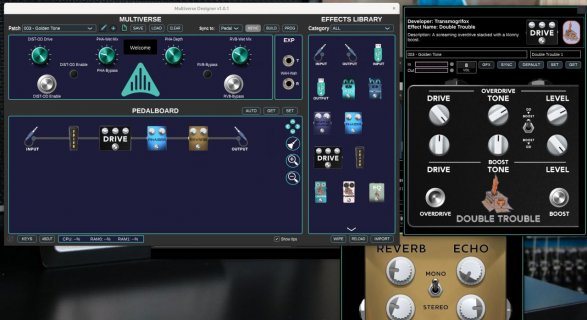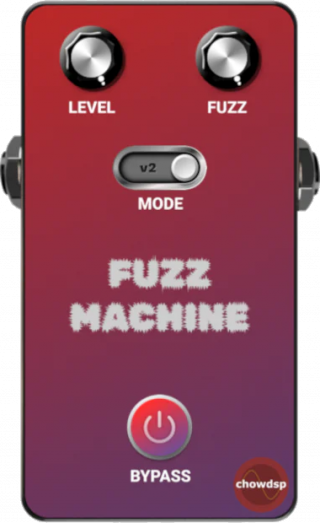Blackaddr
Well-known member
Aviate Audio just launched a new programmable DSP guitar stompbox called Multiverse that uses a Teeny MicroMod. It has a comprehensive framework for easy development of plugin-like effects, but more about that later.
Importantly, the Teensy isn’t locked down, so you can program it with your own custom programs using the normal Teensyduino tools. As the maker of the TGA Pro board and BALibrary, one of the most common questions I get is about enclosures. As a premade stompbox, the Multiverse is a pretty good hardware platform for making your own Teensy based effects.
To make things easier, I’ve added board support for Multiverse to my BALibrary. I’ve made a demo program here to show how to exercise all the basic controls and OLED display.
LIMITED TIME DISCOUNT: The Teensy community here and the amazing work by Paul is what makes things like Multiverse possible, so Shane at Aviate Audio has agreed to provide a special discount to PJRC forum users. You can use code “TEENSY50” at checkout to get an additional $50 off the launch sale price for a total $100 off.
https://aviateaudio.com/products/multiverse-pedal
Multiverse Framework:
The framework is designed to provide an web-store like experience for audio plugins on Teensy hardware using a customized and extended version of the Teensy Audio library.
Effect Creator is a developer application that lets you build plugins (called EFX) and make graphical GUIs for them, similar to VST plugins. You then use these EFX on your own pedal, or can upload them to their website for others to download.
Designer is the user application where you arrange your effects into virtual pedalboards and presets, then upload them to the Teensy. The application allows you to assign the switches and encoders on the pedal to various effect params, as well as realtime control of the effects using the Designer application itself.
Some videos of Shane showing off the Multiverse: vid1 and vid2


Importantly, the Teensy isn’t locked down, so you can program it with your own custom programs using the normal Teensyduino tools. As the maker of the TGA Pro board and BALibrary, one of the most common questions I get is about enclosures. As a premade stompbox, the Multiverse is a pretty good hardware platform for making your own Teensy based effects.
To make things easier, I’ve added board support for Multiverse to my BALibrary. I’ve made a demo program here to show how to exercise all the basic controls and OLED display.
LIMITED TIME DISCOUNT: The Teensy community here and the amazing work by Paul is what makes things like Multiverse possible, so Shane at Aviate Audio has agreed to provide a special discount to PJRC forum users. You can use code “TEENSY50” at checkout to get an additional $50 off the launch sale price for a total $100 off.
https://aviateaudio.com/products/multiverse-pedal
Multiverse Framework:
The framework is designed to provide an web-store like experience for audio plugins on Teensy hardware using a customized and extended version of the Teensy Audio library.
Effect Creator is a developer application that lets you build plugins (called EFX) and make graphical GUIs for them, similar to VST plugins. You then use these EFX on your own pedal, or can upload them to their website for others to download.
Designer is the user application where you arrange your effects into virtual pedalboards and presets, then upload them to the Teensy. The application allows you to assign the switches and encoders on the pedal to various effect params, as well as realtime control of the effects using the Designer application itself.
Some videos of Shane showing off the Multiverse: vid1 and vid2





